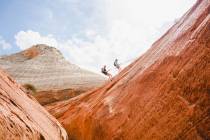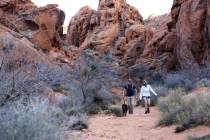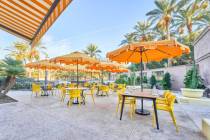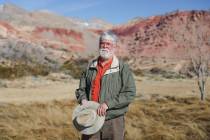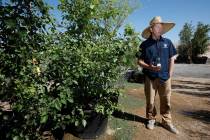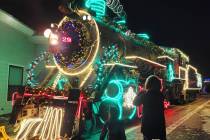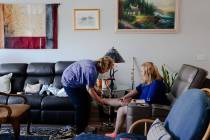Godfather of High Culture: How Charles Vanda helped pioneer the arts scene in Las Vegas
In 1964, the Las Vegas Symphony Society imported an ensemble from the Boris Goldovsky Grand Opera Theater of Boston to present The Barber of Seville. Actually, Las Vegas had no symphony yet, just residents committed to culture. The society included entertainment writer Bill Willard, conductor Antonio Morelli, educator Cynthia Cunningham and political activist Flora Dungan.
But two years later, Charles Vanda moved from Los Angeles to Southern Nevada and helped change the culture of culture. Vanda had been a bass player, then a press agent. In 1935, he became program manager for CBS Radio’s Hollywood productions. During World War II, he served on Gen. Dwight Eisenhower’s staff and helped create Armed Forces Radio. In 1946, he began writing and directing for television, then moved to Philadelphia as general manager of WCAU-TV. There he hired an unknown named Ed McMahon to play a clown on a kids’ show. McMahon always credited Vanda for starting his career.
In 1966, Vanda started Channel 5 in Henderson/Las Vegas, then sold it after a couple of years. Later, Herb Kaufman, owner of the Wonder World department store, bought it with Johnny Carson, who knew McMahon pretty well. Vanda, meanwhile, moved on to help get the local symphony going and produce the St. Jude’s Night of Stars fundraiser.
Then in 1975, Vanda became programming director for UNLV’s new Artemus W. Ham Concert Hall. Through his contacts, he lined up symphonies and soloists from around the world, including Isaac Stern, Eugene Ormandy and the Philadelphia Orchestra, Aaron Copland and Itzhak Perlman.
It wasn’t always easy. One of Vanda’s closest friends, Terry Care, a longtime local journalist, attorney and state senator, recalls a lunch where Vanda “was griping because it had cost him a fortune to take Perlman to lunch at the Tropicana and he wanted caviar.”
Former Review-Journal managing editor and UNLV journalism professor Mary Hausch, also a close friend of Vanda’s, remembers another problem: “At the first performance, people applauded all the time. So he started putting in the program when you’re supposed to applaud, and gave out cough drops because you’re not supposed to cough. Charles not only enticed people to come here with all his connections, but taught people how to be patrons of the arts.”
When Marjorie Barrick, in 1981, provided the funds for the lecture series in her name, she and UNLV asked Vanda to bring in the speakers. They were a who’s who, ranging from a Space Shuttle crew and diplomats to Carl Sagan and the tag team of William F. Buckley Jr. and John Kenneth Galbraith. “He knew what he was doing,” Care says. “He had a touch for everything — broadcasting, cultural events, great contacts.”
Vanda didn’t just book them, he knew them. Hausch met Vanda when he would bring in press releases about his latest event. He once told her he would be away: “I’m going to Cape Cod to go sailing with Walter Cronkite.”
“Take pictures,” she replied. “I want to see them.”
She thought she was calling him out on a fib. “But he called and said, ‘I have lots of pictures. Let’s go to lunch.’ So I went, and there’s a stack of photos of him with Cronkite.”
Care remembers joining Vanda at a broadcasting conference in Las Vegas where Vanda waved to Cronkite on the dais, and Cronkite came down to talk with him.
“When we first started,” Vanda said in 1982, “we were turned down by a number of great concert artists who didn’t want to have anything to do with Las Vegas.”
That has long since changed. “It took somebody of Charles’s talents and connections to pull it off,” Hausch says.
Vanda died in 1988 at age 84. It would be almost a quarter century before The Smith Center at last gave Las Vegas a permanent home for high culture. But it’s hard to imagine that landmark event without the foundation laid by Charles Vanda. ◆
Michael Green is a professor of history at UNLV.



